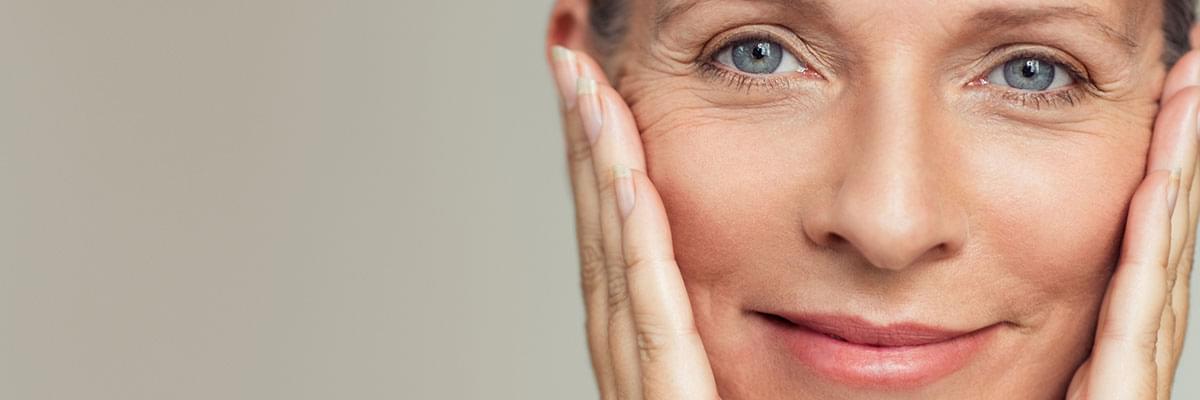
What can we do for you?
Aesthetic treatments are no longer reserved for celebrities or people in their forties and fifties. With increasing awareness of preventative skincare and cosmetic procedures, many people are now asking themselves – when is the best time to start? Is there a ‘right age’ to begin treatments like Botox, fillers, or skin rejuvenation?The answer isn’t a single number. It depends on your skin’s condition, your personal goals, and the type of treatment being considered. While age can be a useful reference point, it’s not the only factor. In fact, the most important thing is to approach aesthetic treatments with the right knowledge and guidance, rather than rushing into them due to trends or peer pressure.
Understanding the purpose of aesthetic treatments
Before considering the right age to begin, it helps to understand the difference between preventative and corrective treatments. Preventative treatments aim to slow down the visible signs of ageing before they fully develop. Corrective treatments are used to reverse or reduce the appearance of existing wrinkles, sagging, or volume loss.
Many people start with skincare and non-invasive options in their 20s or early 30s to maintain their skin’s health and prevent premature ageing. Others wait until their 40s or beyond, when the signs of ageing become more visible. There is no wrong path, as long as the decision is informed and based on your own skin’s needs.
Starting in your 20s – prevention and skincare
People in their 20s often have healthy, plump skin with high collagen production. At this stage, the focus is usually on prevention. Using high-quality skincare products, wearing SPF daily, and adopting healthy lifestyle habits can delay the appearance of fine lines and dullness.
Some people also choose early, low-dose aesthetic treatments such as “baby Botox” or gentle chemical peels. These options can prevent the development of dynamic wrinkles – lines caused by repeated facial movement – such as crow’s feet or frown lines.
However, it’s important not to go overboard. Treatments at this age should be light, subtle, and used to support skin health, not change natural features. Overuse can lead to unnatural results and long-term dependency.
In your 30s – subtle intervention and skin support
The early 30s are often when people begin to notice the first signs of ageing. Fine lines may appear, skin texture may become less smooth, and collagen production starts to slow down.
This can be a good time to introduce aesthetic treatments like Botox for expression lines, hyaluronic acid fillers for under-eye hollows or smile lines, or treatments like microneedling to improve skin tone and texture.
The key is to start with minimal intervention. Treatments in your 30s should aim to preserve youthfulness and encourage natural regeneration. Regular skin maintenance, hydration, and sun protection are still your most powerful tools.
In your 40s – correction and volume restoration
By the time you reach your 40s, the signs of ageing often become more pronounced. Wrinkles deepen, volume is lost in areas like the cheeks or jawline, and skin laxity becomes more noticeable.
At this stage, aesthetic treatments are more likely to be corrective rather than preventative. Dermal fillers, skin-tightening treatments, and more targeted Botox applications can help restore youthful contours and smoothness.
It’s also a good time to consider collagen-stimulating treatments such as radiofrequency, ultrasound, or advanced resurfacing. These can improve elasticity and skin density without surgery.
Treatments in your 40s are most effective when combined with a tailored skincare routine and ongoing maintenance rather than one-off procedures.
50s and beyond – natural enhancement and skin quality
In your 50s and beyond, skin regeneration slows further, and deeper structural changes in the face become more apparent. Aesthetic treatments can still offer excellent results, but they may need to be more comprehensive to achieve natural rejuvenation.
Combining fillers with collagen-boosting procedures and advanced skincare can enhance the face while maintaining softness and character. It’s also important to adjust expectations – the goal should be refreshed, not reversed, ageing.
This stage is not too late to start. Many people who begin treatments in their 50s experience a confidence boost and visible improvement in skin quality. A careful and personalised approach is essential to avoid overcorrection.
What matters more than age – personalised care
While age can give a general guideline, the most important factor is your skin’s condition and your personal goals. Some people in their 40s may have fewer wrinkles than those in their 30s due to genetics, sun exposure, or lifestyle. Others may want to focus on skin texture or pigmentation rather than volume loss.
This is why a consultation with a qualified aesthetic practitioner is essential. They will assess your skin, listen to your concerns, and recommend a treatment plan based on what’s best for *you*, not your age group.
Choosing the right practitioner is key. They should be medically trained, experienced with your skin type, and committed to creating natural, age-appropriate results.
Psychological readiness and maturity
Another consideration is emotional readiness. Starting aesthetic treatments is a personal decision and should be driven by your own desires, not pressure from social media or external expectations.
You should feel confident in your body and be realistic about what treatments can and cannot achieve. Cosmetic enhancements can boost self-esteem, but they shouldn’t be used to fix deeper emotional issues.
The best results come when aesthetic treatments are approached with maturity, balance, and a sense of self-worth.
Conclusion
There’s no fixed ‘right age’ to begin aesthetic treatments – just the right timing for you. Whether you’re looking to prevent signs of ageing early on or make gentle corrections later in life, the key is to take a thoughtful, well-informed approach.
Focus on skin health, choose experienced professionals, and aim for natural enhancements that respect your features and life stage. With the right care and timing, aesthetic treatments can be a positive, empowering part of your personal wellness journey – at any age.
Back to Articles






















